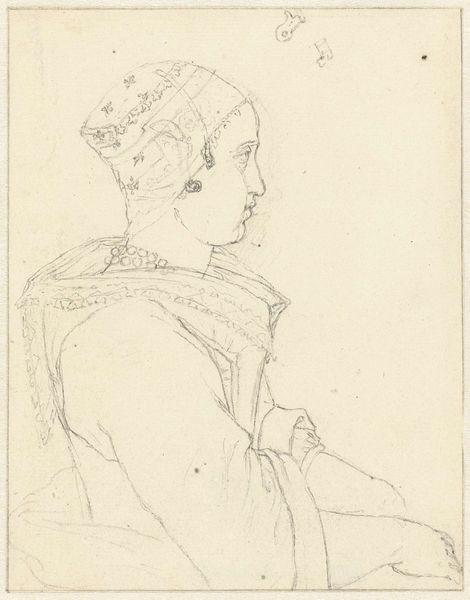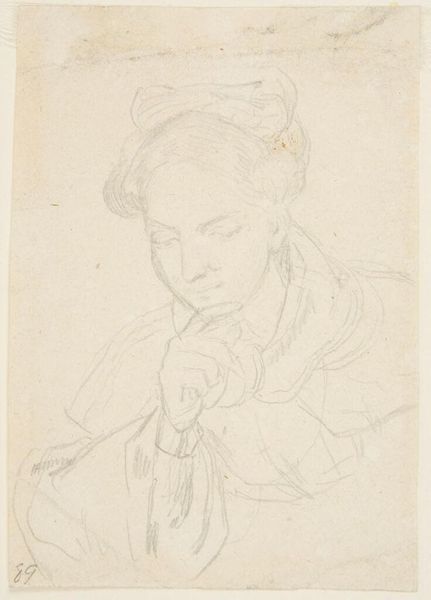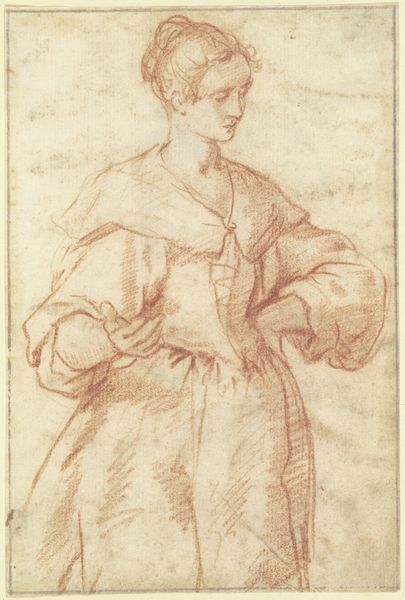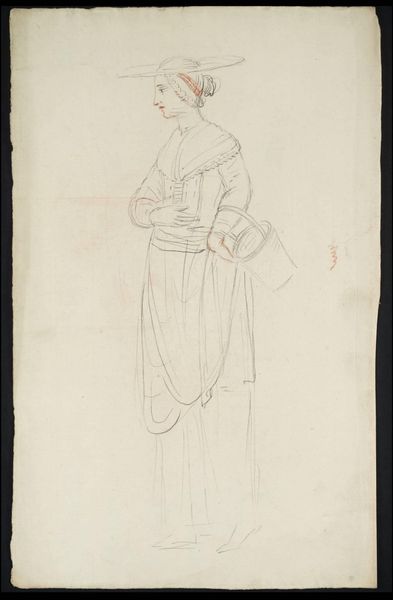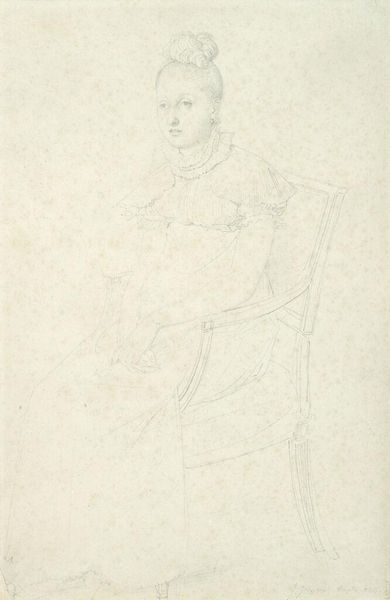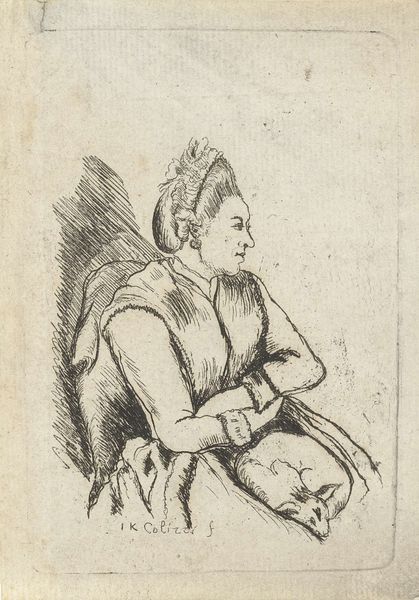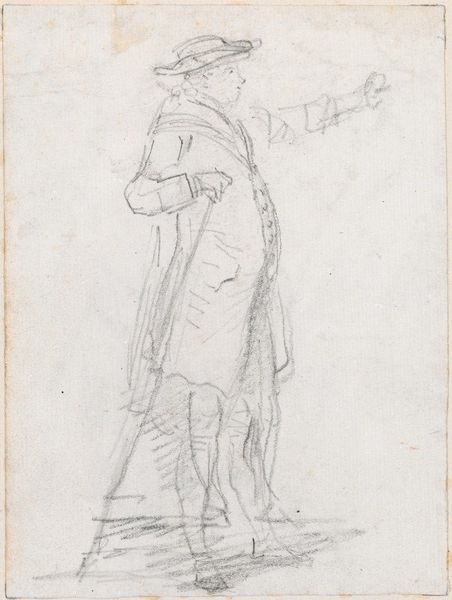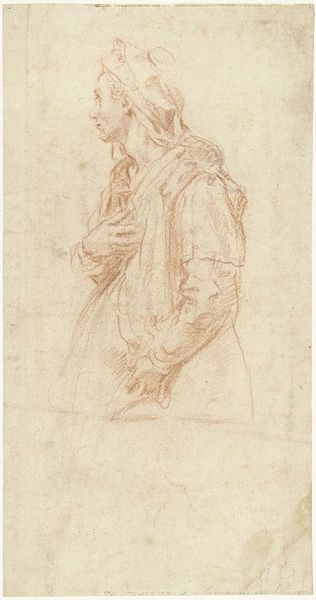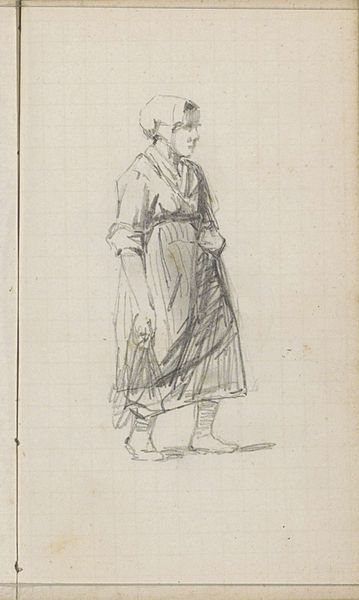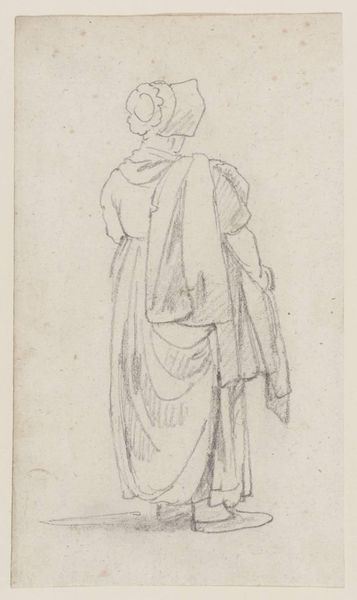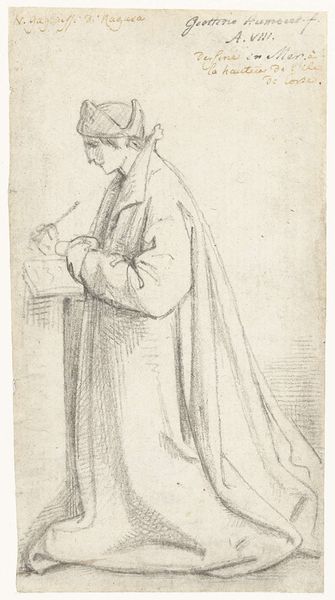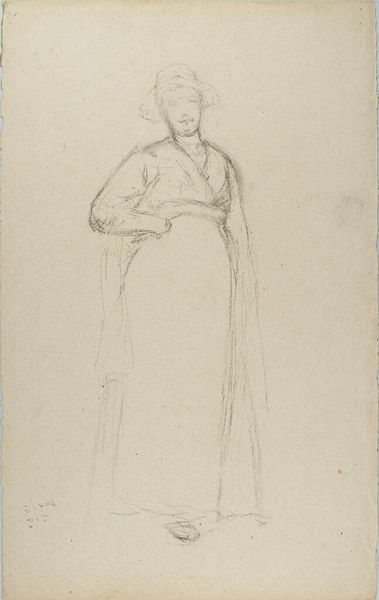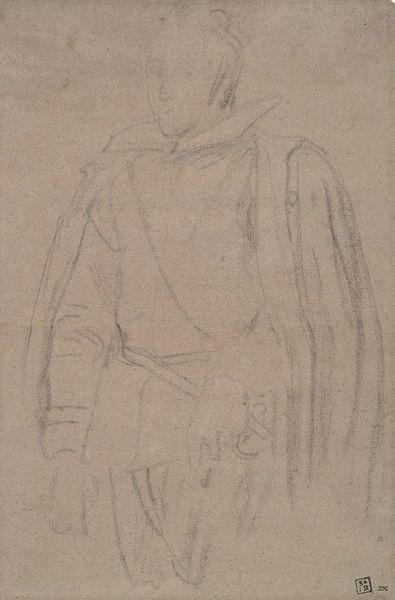
#
toned paper
#
light pencil work
#
pencil sketch
#
personal sketchbook
#
ink drawing experimentation
#
pen-ink sketch
#
sketchbook drawing
#
pencil work
#
watercolour illustration
#
sketchbook art
Dimensions: height 141 mm, width 111 mm
Copyright: Rijks Museum: Open Domain
Curator: Welcome. Here we have a work by Bernard Picart titled "Zittende Noordhollandse boerin, in profiel naar rechts," placing the work sometime between 1683 and 1733. It’s a delicate sketch rendered in pencil, with a touch of ink, on toned paper, now residing here at the Rijksmuseum. Editor: It’s amazing how much quiet can exist in a single line. The whole piece feels like a whisper, almost fragile, as if it could blow away with a good sneeze! The toned paper just barely lets the light pencil work breathe. Curator: The apparent spontaneity lends a certain honesty. We see her, not aggrandized, but perhaps as Picart encountered her, maybe sketching quickly in a personal sketchbook. The details of her clothing—the headdress, the layered garments, and the necklace—speak to the cultural context of the North Holland peasantry during that period. Editor: I see someone pensive, or perhaps weary. There’s something about the clasped hands, and that distant gaze, like she’s watching the horizon, waiting for something… or maybe longing for something she’s already lost? Does that make sense? Curator: It resonates deeply. It prompts consideration about the lives of women during this era, their roles, their realities often unrecorded, save for pieces like these. And also the male gaze: the relationship between artist and subject. Were these works commissioned or products of personal fascination? Editor: Exactly. And while she may appear to be the primary focus, I think there's something really compelling in Picart’s line work too. He isn’t just capturing her likeness, he’s conveying movement, and the effect is, really, that she comes alive right before your very eyes. The artist leaves visible clues about his process. It really feels like peeking inside the artist's studio. Curator: The lack of heavy detail underscores the everyday-ness. We often overlook these images that offer subtle yet invaluable glimpses into the fabric of social history. This drawing could be interpreted through a postcolonial lens, examining the representation of rural populations and power dynamics inherent in documentation. Editor: I agree. It's far more than just an old sketch, it’s more a visual poem, something about the untold tales woven into the everyday moments, captured so fleetingly on paper. Thank you, Picart. Curator: Thank you both for spending this moment reflecting with us. Hopefully this unlocked even deeper meaning to be discovered from Picart's art.
Comments
No comments
Be the first to comment and join the conversation on the ultimate creative platform.
